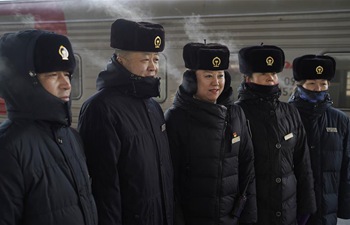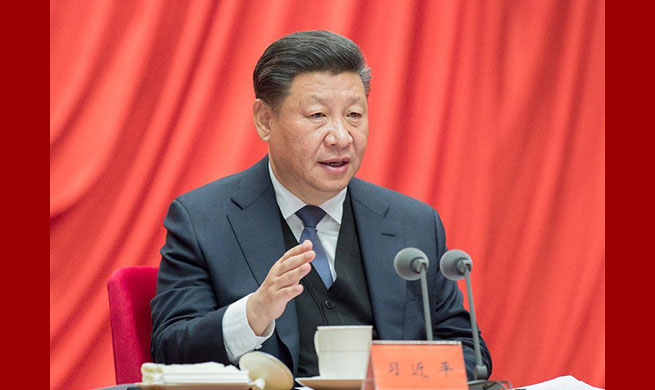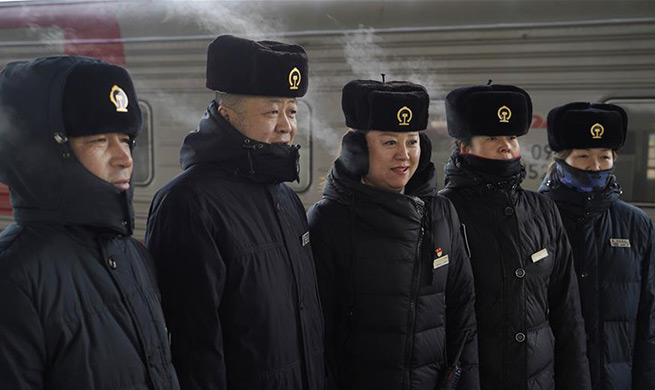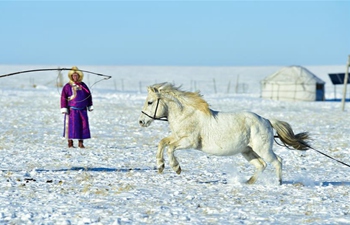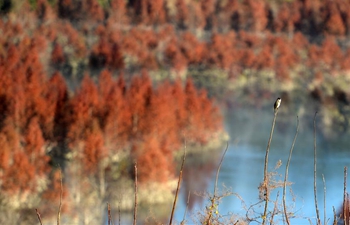URUMQI, China, Jan. 12 (Xinhua) -- Sengel, a 33-year-old herdsman in Altay Prefecture in northwest China's Xinjiang Uygur Autonomous Region, started traveling through inhabited mountainous regions, only with a kind of ancient fur snowboards that were used by his ancestors about 12,000 years ago.
In 2015, an ancient rock painting depicting people hunting on the fur snowboards was found in Altay Prefecture, dating back about 12,000 years, which made Altay one of the places where skiing originated.
The fur snowboards, which are made of pine wood and horsehide, are still being used by local herdsmen because of their simple and smart designs.
"We choose the horsehide on which the grain runs in same direction, which provide traction to prevent skiers from slipping when they are traveling uphill, while allows them to slide forward more smoothly when going downhill," Sengel said.
With other eight local herdsmen, Sengel planned to travel about 300 kilometers in mountainous regions in ten days, among which the route of over 100 kilometers is in uninhabited area.
"Through this traveling, we hope more and more people can know about our fur snowboards in order to better preserve the ancient heritage," he said.
While the fur snowboards used to be tools for local herdsmen to travel and hunt, they are used in recreational sport nowadays.
Many villages in Altay Prefecture including Hemu have their own skiing teams with fur snowboards, holding skiing competitions every year.
Compared with modern snowboards, the fur snowboards are more suitable for skiers to ski in undeveloped skiing areas without ski lifts or other forms of assistance thanks to their advantages in traveling uphill, said Malichin, the team leader of the nine herdsmen including Sengel.
Promoting the ancient snowboard skiing has been in accordance with an ambitious plan China unveiled with its successfully bid for the 2022 Winter Olympics, in which as many as 300 million people are encouraged to take part in winter sports.
The country released a ten-year plan in 2016 on developing winter sports, aiming to develop one trillion yuan worth (about 147 billion U.S. dollars) of the winter sports industry by the year of 2025.





